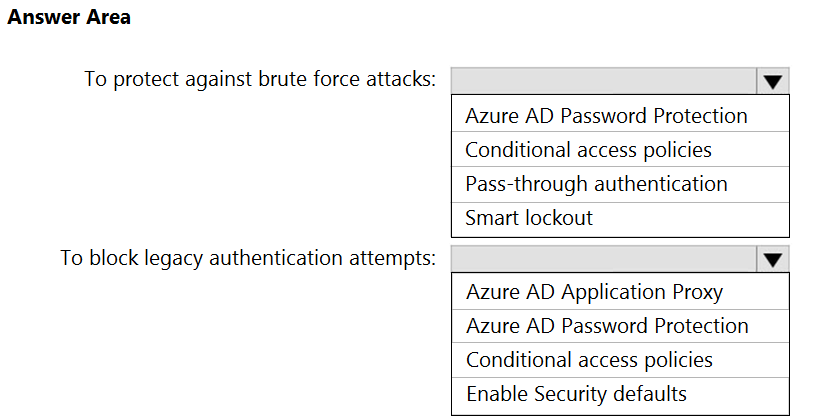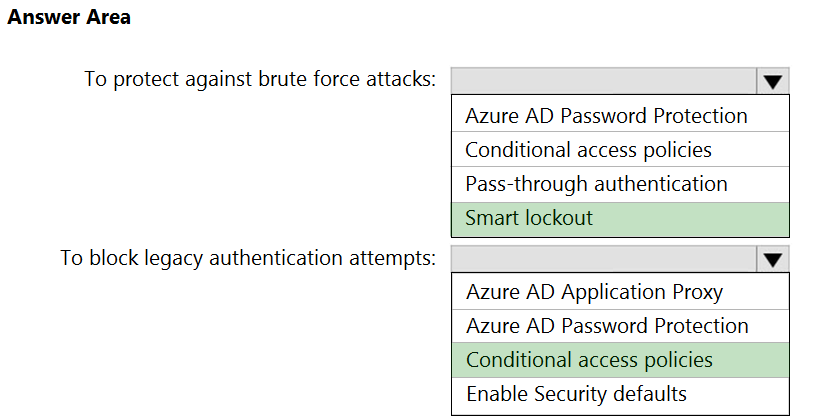

HOTSPOT -
You have the Free edition of a hybrid Azure Active Directory (Azure AD) tenant. The tenant uses password hash synchronization.
You need to recommend a solution to meet the following requirements:
✑ Prevent Active Directory domain user accounts from being locked out as the result of brute force attacks targeting Azure AD user accounts.
✑ Block legacy authentication attempts to Azure AD integrated apps.
✑ Minimize costs.
What should you recommend for each requirement? To answer, select the appropriate options in the answer area.
NOTE: Each correct selection is worth one point.
Hot Area:

MrRandom
Highly Voted 3 years, 11 months agokilowd
3 years agosapien45
3 years, 1 month ago[Removed]
3 years, 10 months agokktamang
3 years, 3 months agoninjaTT
3 years, 3 months agoSanjSL
3 years, 6 months agokktamang
3 years, 3 months agoJayBee65
3 years agodkltruong88
Highly Voted 3 years, 9 months agoCg007
Most Recent 1 year, 3 months agoCg007
1 year, 3 months agorana9371
2 years, 8 months agokmeena
3 years agog6singh
3 years, 1 month agocloudera
3 years, 3 months agokktamang
3 years, 3 months agoJayBee65
3 years agoexnaniantwort
3 years, 4 months agoAdamHarrison
3 years, 4 months agoplmmsg
3 years, 4 months agoixl2pass
3 years, 5 months agoqerem
3 years, 6 months agostudent22
3 years, 8 months agosyu31svc
3 years, 9 months agonkv
3 years, 10 months agosouvik123
3 years, 10 months ago